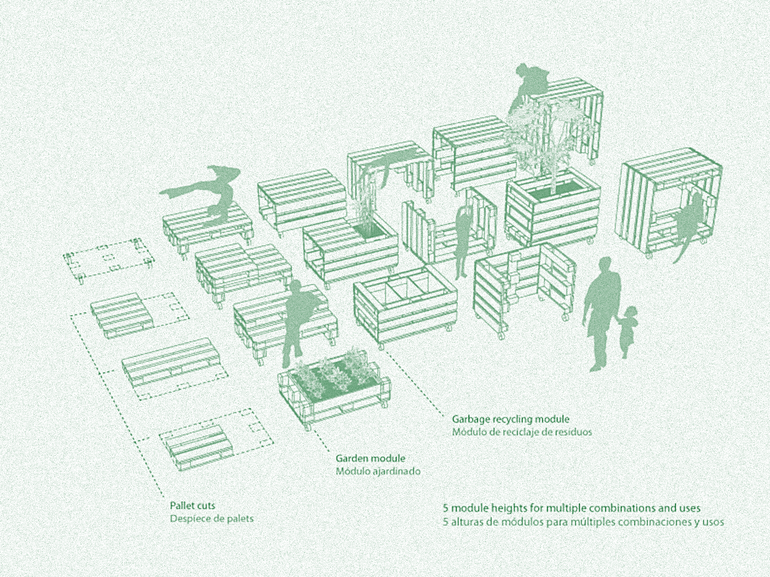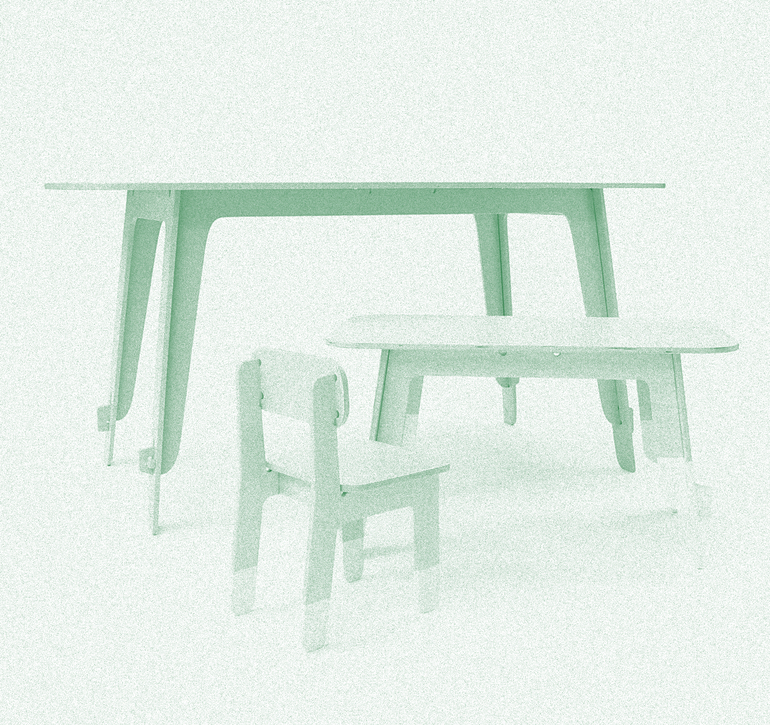Economies
Often when we speak about Open Source Product Design, people are concerned about how to earn money with their creations. And although these concerns are very understandable -- everybody has to fill their physiological needs and feel safe -- these questions come from a very narrow point of view on how designers can be paid.
Since the beginning of widespread industrialization and mass manufacturing of objects, designers have mainly earned their living by licensing their designs and earning royalties. In these cases, exclusivity and popularity of the objects are key elements that influence how a designer makes money.
Patenting a design is a costly venture and most of the time will only be profitable if you also have the money to enforce it. Having a patent does not make you instantly rich. And if you think someone is infringing your rights, you will have to go to court to solve that problem and make a case for compensation. As you know, going to court also requires money.
So if I open source my designs, then everyone can make money with it?
Yes. And the other way around is also true, you can make money with other people's open source projects. The shift here is important. If you open source your work, someone else might be interested in it, apply transformation to it, improve it, and this then comes back to you.
Another thing to consider is, since it's so easy to share digital files and since people, with reason, consider that immaterial objects should be free to copy and distribute, there is still a true cost in making material objects. Not only a material cost, but also a knowledge cost in acquiring the skills to manipulate the tools that will help produce the physical objects and an energy cost in moving around the physical objects to their end location. Overall, people are still willing to pay for those costs.
Benefits
Benefits can not always be measured in money. Participating in community ventures, sharing your knowledge, being open to others and shrinking your ego can be profitable for you and your professional project but can hardly be translated into numbers.
And one could hope that what open source practices have done for software, with methodologies such as agile problem solving, iterative prototyping and distributed development, similar approaches could change the face of product design and provide benefits yet to discover.
A second life
Why do you keep so many projects hidden or dead in your portfolio? Who do they benefit? You were been commissioned to create something. You were paid. The client was happy and now the project is in the attic. Unless the client has all the rights over that project or you can't disclose anything from it, why not release it as open source? Maybe it'll be a little extra work. Keeping a project to oneself is easier than making it understandable to everyone, but why not put the effort and give this project a second round. The hours were paid, let's earn something more with it.
Opportunities to explore
Education
Through the organization of workshops, participation in lectures and any other form of knowledge transmission, a designer can get financial support for developing and growing his/her work.
Education of the buyers and partners is something that should also not be forgotten. Although the benefits of open sourcing your work might be clear to you, this is maybe not the case for your clients or editor. If they understand the concepts and social aspects of open source product design, they might be even more happy to invest in your projects or at least understand what they are participating in.
Services
This is a model that comes from the experiences of open source software economies. Developers of open source software don't earn money by selling the software, but by selling additional services related to the software. For example, Automattic, the company behind the Wordpress blogging platform offers paid hosting for people who don't want to set up and host Wordpress themselves. They also provide services like statistics, anti-spam, backups, etc.
Designers as well could explore these practices by offering, for example, customizations of an open source model.
A user-designer relationship
Just like in other movements, as for example with the delivery of farm products directly from the local farmers to the consumer, open source product designers can leverage their direct relationship with their buyers.
The relation here can be based on longer mutual support, more precise understanding of needs and an improved quality of life by respecting the different partners involved. Cutting the middleman out could also be profitable for both.
Free is not gratis
Free/libre licensing does not mean that you can't sell the product. You can sell your plans and pdf, set up a webshop for it and encourage people to donate money so that you keep on improving what you are proposing.
Crowdfunding
Crowdfunding and open source goes well together, and it might even be the only way this is actually beneficial for all the parties involved. People are always willing to invest in something they find useful and be part of a venture -- especially if they know that they will get something in exchange and that it will benefit a larger community.
Open source as an identity
People like to share. If you give them something they have the right to share, they will happily do so. As such, open sourcing some of your work could be a way to get some attention, or even something to be known for. Your objects might travel further than if you just keep it for yourself and the generosity of open sourcing could shine back on you and the rest of your projects.
Who's building your open source furniture?
Something we haven't seen explored in open source product design but that could have some impact in the near future is the importance of the builder in the open source product design process. If the design files and documentation are freely available to download, then what differentiates one object from another is who has built it.
Collectors will always be willing to pay extra for a piece that has been built by the original creator than by someone else. Someone else might prefer to pay a company that is owned by its workers or that has a social model different than traditional capitalist ones.The stories around the objects are what give value to them. The value of an object does not lie only in its function and the art and vintage design markets exist to prove it.
Tools
Goteo
Goteo is a platform for civic crowdfunding and collaboration on citizen initiatives and social, cultural, technological and educational projects. Goteo has replicas and alliances in several countries, thanks to its open source code as well as the awards and international recognition it has gathered since 2011. It is a tool for generating resources ‘drop by drop’ for a community of communities […]. [Their] mission is tightly linked to principles of transparency, progress and societal improvement. −Goteo.org
Opendesk
Opendesk promises to be a hub between designers and local builders. Their business is built on creating, collecting and promoting open designs (not all open source) and encouraging the local production of those designs through a network of fablabs and makerspaces. They then take a small portion of the price charged to the end purchaser.
Snowdrift
This type of platform encourages participants to provide regular donations to the projects they want to support. Through very small recurring payments and social network effects, creator can potentially harvest a monthly salary, allowing them to pursue their creative work. https://snowdrift.coop/
Objects
Comingle
Comingle is an open source vibrating dildo that you can customize to your heart's content. It has been successfully funded through a crowdfunding campaign on Indiegogo
X-Modules: furniture for Ixelles Library

With X-Modules, Maria Solé Bravo and Julien Deswaef have developed a multi-purpose design to furnish the courtyard at the entrance of the Ixelles public library in Brussels. As required by the library, the furniture is made from upcycled material -- re-used pallets -- and was built by neighbours and school children during a series of workshops. The open source nature of the project fitted perfectly with the mission of the library and was one of the key factors that got this project selected after the competition.
« Autour du trait »

With their series « Autour du trait », Nonpareil sells their open source product designs at different steps of construction. For different prices you can purchase a piece from just the pdf download, a rough build to a classic finish or even order a customization of the object itself.
Food for thought
CUCULA
The CUCULA design manufacture produces and sells premium design objects and as such conveys basic technical qualifications with focus on furniture prodution. In the proprietary workshop, fuelled by active collaboration between refugees, designers and pedagogues, a lively production space is forming, where knowledge about carpentry and design is transferred and where new ideas are being developed.[…] As a starting point, the manufacture is exploring Enzo Mari’s ‘DIY’ furniture program ‘Autoprgettazione’.The proceeds of the coming furniture sales will be invested directly in the refugees’ education and cost of living.
http://www.cucula.org
You Are Not A Gadget: A Manifesto
Some authors have criticized the production of open source services and objects, linking them with the communist movement and arguing that they hinder development. For example Jaron Lanier, an American computer philosophy writer, suggests in his book You Are Not A Gadget: A Manifesto that the open source productions generate a kind expropriation of the intellectual productions that he calls "Digital Maoism".
Wikinomics: How Mass Collaboration Changes Everything
In the best-selling book Wikinomics, the authors, Don Tapscott and Anthony D. Williams, defend the idea that openness is creating a new form of economic development and, even more, they argue that it will be an essential part of economic innovation and development in the near future.
The economic models described in the book are based on four themes: Openness, Peering, Sharing and Acting Global.
Openness, which includes not only open standards and content but also financial transparency and an open attitude towards external ideas and resources. Peering, which replaces hierarchical models with a more collaborative forum. Tapscott and Williams cite the development of Linux as the "quintessential example of peering." Sharing, which is a less proprietary approach to (among other things) products, intellectual property, bandwidth, scientific knowledge. Acting globally, which involves embracing globalization and ignoring "physical and geographical boundaries" at both the corporate and individual level." −Wikipedia
Designer-to-consumer (D2C)
Some examples of designers-to-consumers approaches:
- http://monoqi.com/en/bestseller-shop.html
- http://www.domusweb.it/en/design/2012/12/17/d2c-generation.html
- http://shop.sylvainwillenz.com/ Sylvain Willenz is a designer with his own shop. Although edited by many brands, he sells also sells his products on his own site.
- http://www.widehandside.com/ A D2C shop from Belgium
Art market
An original Jean Prouvé's school desk at 3000€
Open questions
- What is it that you are selling?
- What do you want to be known for?
- Where do you stand in this capitalist economy?